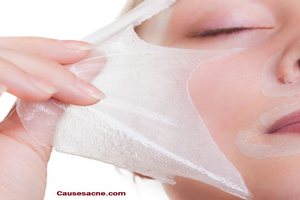
Using Chemical Peels To Treat Acne Scars
After overcoming an acne outbreak that may have lasted one day, one week, one month or even longer, the last thing you want to deal with is acne scars. But the truth of the matter is that some people do have acne outbreaks that result in scarring. This can be a major setback to a person’s confidence, self-image and overall feelings of happiness because the acne has gone away, but what is left behind is not much better. Even worse, if the scarring is that bad, the result can be extreme sadness that leads to depression and a diminished quality of life.
The good news is that through the advancement of modern medicine and technology, there have been more and more methods developed to decrease or completely rid acne scars from your complexion. This has put many acne scar sufferers in a better frame of mind knowing there is hope for them in removing something from their appearance that has so greatly affected them.
One of the most popular methods of treating acne scars is the use of chemical peels. These peels use solutions that are chemically-based and applied to the affected area. The chemicals exfoliate the skin causing it to blister and then peel off. Over a few days, the skin comes off leaving you a complexion that is free from blemishes and scars. At the least, it will certainly diminish the look of the scars.
Types of Chemical Peels
There are generally three types of chemical peels that are used to treat acne scars—alphahydroxy acid peels, trichloroacetic acid peels and phenol peels.
Alphahydroxy Acid (AHA) Peels: Sometimes referred to as glycolic acid peels, the acid used in this peel activates new cell formation on the skin after it is applied to your face. The acid exfoliates and removes the upper layers of skin to even it out. If you are using this type of peel in a dermatologist’s office, the solution will be anywhere from a forty to seventy percent concentration. At-home peels will be much less.
Depending on how much scarring you have, you may need four to six peels that are spaced two to four weeks apart from each other. The peels themselves do not take long, but you will most likely require regularly scheduled peels at a rate of two per year after you are done using it for removing your acne scars. AHA peels are considered the mildest out of all the peels.
During an AHA peel, there may be a bit of stinging which eventually goes away after the application of a neutralizing solution. After the peel, you will have some redness that will go away in a few hours. You may be prescribed a steroid cream if you have any crusting or irritation afterwards. It is also highly recommended that an SPF 30 sunblock be used as your skin will be highly sensitive to the sun. The average cost of an AHA peel is about $150.
Trichloroacetic Acid (TCA) Peels: Just like an AHA peel, TCA peels exfoliate the dead skin that causes your pores to become clogged as well as killing the bacteria that cause breakouts in the first place. But these peels tend to go deeper in the skin to treat scars that are not just confined to your skin’s surface.
After a TCA peel, your skin will appear sunburned for a few days prior to the beginning of the peeling process. But after the peeling is completed, your skin will be noticeably better in terms of color, tone and texture. Because it is so effective in making skin look better, more and more people are opting for this type of treatment for many other facial imperfections. These dramatic results, however, only last about a year so you can expect at least one peel a year for maintenance if you are using them for aesthetic purposes. In terms of price, you can expect to pay anywhere from $500 to $1200 for a TCA peel.
Phenol Peels: This type of peel is considered the strongest of the three and may not be recommended for every skin type. A phenol peel is a deep peel that removes the outer layers of your skin. It often lightens the skin of the treated area. For this reason, your skin tone may be a deciding factor as to whether or not this procedure is right for you. In seven to ten days you will begin to see new skin forming as the peel encourages the growth of collagen below your skin. You will also have some swelling and redness that may last up to four months. Unlike the other peels, the results of a phenol peel can last for years. Phenol peels run the gamut in terms of price—you may pay $150 to treat a small spot or a few thousand dollars if you are having the peel applied to your entire face.
There are many benefits to these chemical peels if you have acne scars which is good news to those who have felt like there was no solution to the problem. And as an extra benefit of these peels, you can have healthier looking skin and a way of decreasing any future acne outbreaks.
